SLAC’s Superconducting X-ray Laser Reaches Operating Temperature Colder Than Outer Space
 Nestled 30 feet underground in Menlo Park, California, a half-mile-long stretch of tunnel is now colder than most of the universe. It houses a new superconducting particle accelerator, part of an upgrade project to the Linac Coherent Light Source (LCLS) X-ray free-electron laser at the Department of Energy’s SLAC National Accelerator Laboratory. The facility, LCLS-II, will soon sharpen our view of how nature works on ultrasmall, ultrafast scales, impacting everything from quantum devices to clean energy.
Nestled 30 feet underground in Menlo Park, California, a half-mile-long stretch of tunnel is now colder than most of the universe. It houses a new superconducting particle accelerator, part of an upgrade project to the Linac Coherent Light Source (LCLS) X-ray free-electron laser at the Department of Energy’s SLAC National Accelerator Laboratory. The facility, LCLS-II, will soon sharpen our view of how nature works on ultrasmall, ultrafast scales, impacting everything from quantum devices to clean energy.


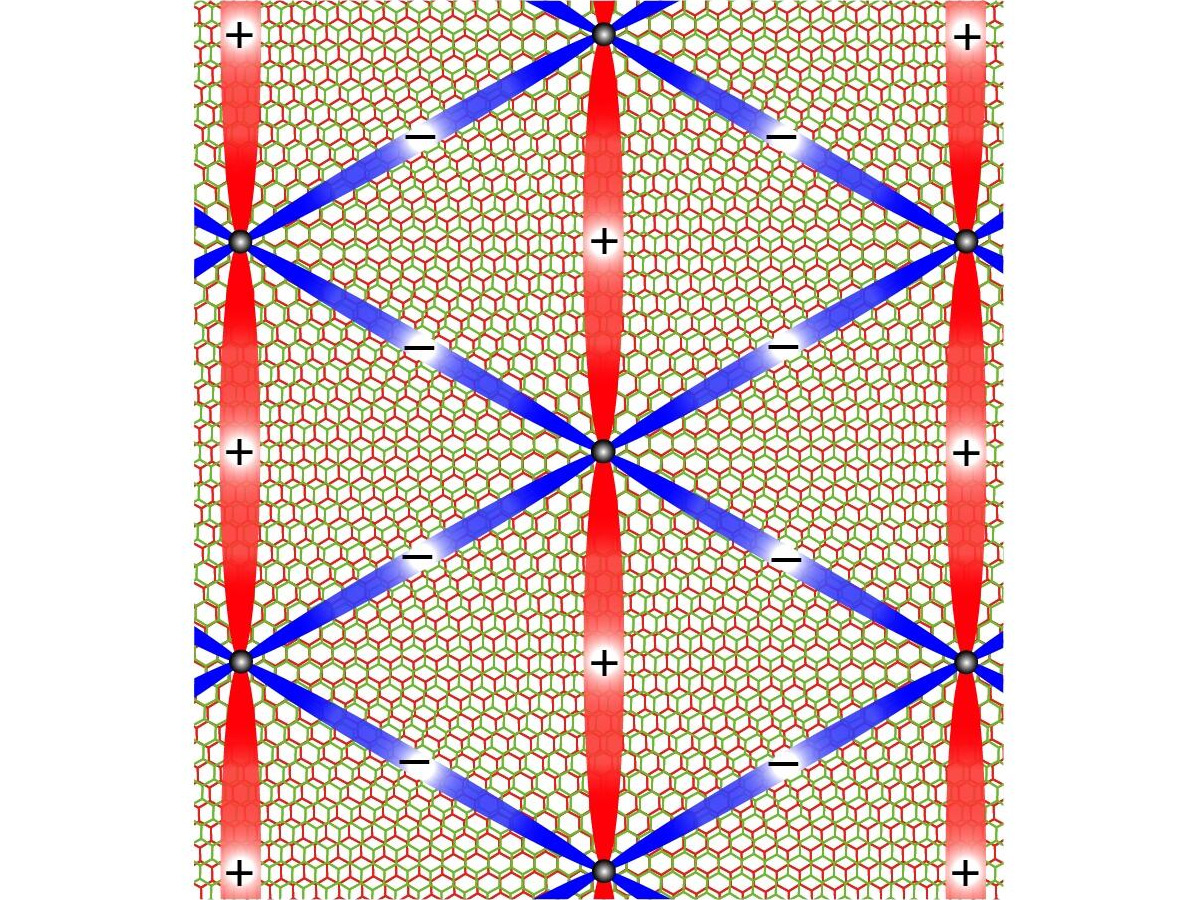 Superconductors are materials that conduct electrical current with almost no electrical resistance at all. This property makes them particularly appealing for a variety of applications, including loss-less power cables, electric motors and generators, and powerful electromagnets that can be utilized for MRI imaging and magnetic levitating trains. Nagoya University researchers have now detailed the superconducting properties of a new class of superconducting material, magic-angle twisted bilayer graphene.
Superconductors are materials that conduct electrical current with almost no electrical resistance at all. This property makes them particularly appealing for a variety of applications, including loss-less power cables, electric motors and generators, and powerful electromagnets that can be utilized for MRI imaging and magnetic levitating trains. Nagoya University researchers have now detailed the superconducting properties of a new class of superconducting material, magic-angle twisted bilayer graphene. Boeing’s groundbreaking cryogenic fuel tank and Airbus’s hydrogen-powered jet engine bring promise to the future of aviation. A new type of cryogenic tank, designed and manufactured by Boeing, completed a critical series of tests at NASA’s Marshall Space Flight Center at the end of 2021. The successful test campaign advances the large, fully composite, linerless tank for safe and ready use in aerospace vehicles. The reusable tank shell was originally constructed as flight hardware for the Experimental Spaceplane Program of the Defense Advanced Research Projects Agency (DARPA).
Boeing’s groundbreaking cryogenic fuel tank and Airbus’s hydrogen-powered jet engine bring promise to the future of aviation. A new type of cryogenic tank, designed and manufactured by Boeing, completed a critical series of tests at NASA’s Marshall Space Flight Center at the end of 2021. The successful test campaign advances the large, fully composite, linerless tank for safe and ready use in aerospace vehicles. The reusable tank shell was originally constructed as flight hardware for the Experimental Spaceplane Program of the Defense Advanced Research Projects Agency (DARPA). Physicists at UC Santa Barbara (UCSB) have become the first to experimentally observe a quirky behavior in the quantum world: a “quantum boomerang” effect that occurs when particles in a disordered system are kicked out of their locations. Instead of landing elsewhere, as one might expect, they turn around and come back to where they started and stop there.
Physicists at UC Santa Barbara (UCSB) have become the first to experimentally observe a quirky behavior in the quantum world: a “quantum boomerang” effect that occurs when particles in a disordered system are kicked out of their locations. Instead of landing elsewhere, as one might expect, they turn around and come back to where they started and stop there.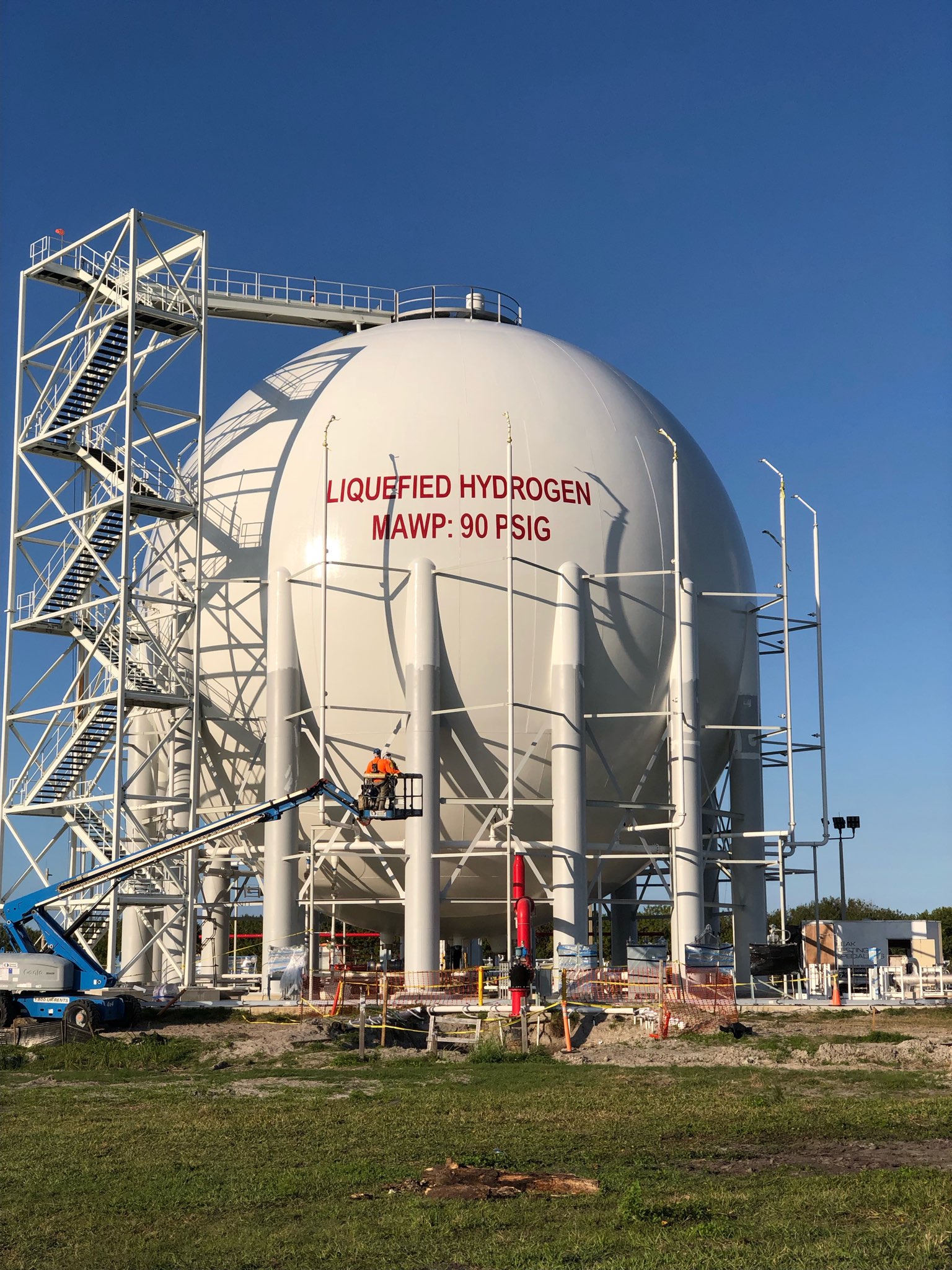 Construction of the world’s largest liquid hydrogen (LH2) storage tank is almost complete at launch pad 39B at NASA Kennedy Space Center (KSC) in Florida. With a usable capacity of 4,732 m3 (1.25 Mgal), this new vessel is roughly 50% larger than its sister tank, which is located 170 m (550 ft) to the southeast. Once the new sphere is fully commissioned, these two tanks will provide a combined LH2 storage capacity of 7,950 m3 (2.1 Mgal) to fuel the new Space Launch System rocket supporting future Artemis exploration missions to the moon and Mars.
Construction of the world’s largest liquid hydrogen (LH2) storage tank is almost complete at launch pad 39B at NASA Kennedy Space Center (KSC) in Florida. With a usable capacity of 4,732 m3 (1.25 Mgal), this new vessel is roughly 50% larger than its sister tank, which is located 170 m (550 ft) to the southeast. Once the new sphere is fully commissioned, these two tanks will provide a combined LH2 storage capacity of 7,950 m3 (2.1 Mgal) to fuel the new Space Launch System rocket supporting future Artemis exploration missions to the moon and Mars. I’m throwing in the towel on academia and starting my own bank. Let’s call it the First Hydrogen Bank. You invest your money, and I’ll bank it as pure hydrogen energy for later use. It’s not only the coolest bank around, but it will be the greenest, fastest (10×), largest (10×), and have the lowest exchange rate among energy banks. Standard terms and fees apply:
I’m throwing in the towel on academia and starting my own bank. Let’s call it the First Hydrogen Bank. You invest your money, and I’ll bank it as pure hydrogen energy for later use. It’s not only the coolest bank around, but it will be the greenest, fastest (10×), largest (10×), and have the lowest exchange rate among energy banks. Standard terms and fees apply: Each year, CSA celebrates women in the fields of cryogenics, superconductivity, and quantum in our annual Women in Cryogenics feature. This year, we meet eight women across various sub-industries of cryogenics who are not only making great
Each year, CSA celebrates women in the fields of cryogenics, superconductivity, and quantum in our annual Women in Cryogenics feature. This year, we meet eight women across various sub-industries of cryogenics who are not only making great 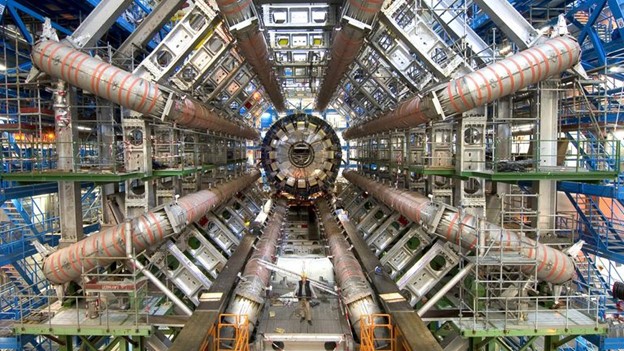 The world's most powerful particle accelerator—the Large Hadron Collider (LHC)—has sprung back to life after a three-year shutdown. After planned maintenance and upgrades, the Large Hadron Collider has been turned back on and will shortly start another run of cutting-edge experiments. The LHC, in Switzerland, was switched off in December 2018 to let scientists and engineers from around the world make it even more powerful. The accelerator at the European Organization for Nuclear Research (CERN) accelerates subatomic particles to almost the speed of light, before smashing them into each other.
The world's most powerful particle accelerator—the Large Hadron Collider (LHC)—has sprung back to life after a three-year shutdown. After planned maintenance and upgrades, the Large Hadron Collider has been turned back on and will shortly start another run of cutting-edge experiments. The LHC, in Switzerland, was switched off in December 2018 to let scientists and engineers from around the world make it even more powerful. The accelerator at the European Organization for Nuclear Research (CERN) accelerates subatomic particles to almost the speed of light, before smashing them into each other. USC’s new cryogenic electron microscopy (cryo-EM) facility, featuring state-of-the-art instrumentation capable of imaging molecules, garnered the spotlight during a recent symposium celebrating the facility’s official grand opening.
USC’s new cryogenic electron microscopy (cryo-EM) facility, featuring state-of-the-art instrumentation capable of imaging molecules, garnered the spotlight during a recent symposium celebrating the facility’s official grand opening.  California-based firm HyPoint is developing an innovative cryogenic tank design that could massively boost the range of hydrogen-powered aircraft, a press statement reveals. HyPoint's technology is extremely lightweight compared with traditional fuel cells and it could allow airliners to fly up to four times farther than traditional passenger aircraft. A 50-56 passenger De Havilland Canada Dash-8 Q300, for example, can fly approximately 1,558 km (968 miles) on jet fuel, according to HyPoint. If it were retrofitted with a fuel cell powertrain and a GTL composite tank, it would be able to fly as far as 4,488 km (2,789 miles).
California-based firm HyPoint is developing an innovative cryogenic tank design that could massively boost the range of hydrogen-powered aircraft, a press statement reveals. HyPoint's technology is extremely lightweight compared with traditional fuel cells and it could allow airliners to fly up to four times farther than traditional passenger aircraft. A 50-56 passenger De Havilland Canada Dash-8 Q300, for example, can fly approximately 1,558 km (968 miles) on jet fuel, according to HyPoint. If it were retrofitted with a fuel cell powertrain and a GTL composite tank, it would be able to fly as far as 4,488 km (2,789 miles).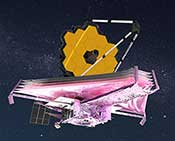 NASA’s James Webb Space Telescope
NASA’s James Webb Space Telescope Researchers in the US report that they have observed the so-called “fourth signature” of superconducting phase transitions in materials known as cuprates. The result, obtained via photoemission spectroscopy of a cuprate called Bi2212, could shed fresh light on how these materials, which conduct electricity without resistance at temperatures of 77 K or higher, transition into the superconducting state.
Researchers in the US report that they have observed the so-called “fourth signature” of superconducting phase transitions in materials known as cuprates. The result, obtained via photoemission spectroscopy of a cuprate called Bi2212, could shed fresh light on how these materials, which conduct electricity without resistance at temperatures of 77 K or higher, transition into the superconducting state. Producing entangled photons whose properties are interdependent is key to several quantum communication technologies. Most techniques for generating these photons make them exclusively in pairs, and those that can produce more than two photons are difficult to implement. But researchers have now made a chip-sized device that can generate bunches of up to six microwave photons at once [
Producing entangled photons whose properties are interdependent is key to several quantum communication technologies. Most techniques for generating these photons make them exclusively in pairs, and those that can produce more than two photons are difficult to implement. But researchers have now made a chip-sized device that can generate bunches of up to six microwave photons at once [ TEAM-UP Together, a new initiative by the American Institute of Physics (AIP) and key physics and astronomy societies, boldly takes the first steps toward achieving a goal of doubling the number of African Americans graduating from college with undergraduate degrees in physics and astronomy by 2030. The AIP Foundation has secured a $12.5 million, five-year game-changing grant from the Simons Foundation and Simons Foundation International in support of this AIP federation action.
TEAM-UP Together, a new initiative by the American Institute of Physics (AIP) and key physics and astronomy societies, boldly takes the first steps toward achieving a goal of doubling the number of African Americans graduating from college with undergraduate degrees in physics and astronomy by 2030. The AIP Foundation has secured a $12.5 million, five-year game-changing grant from the Simons Foundation and Simons Foundation International in support of this AIP federation action. 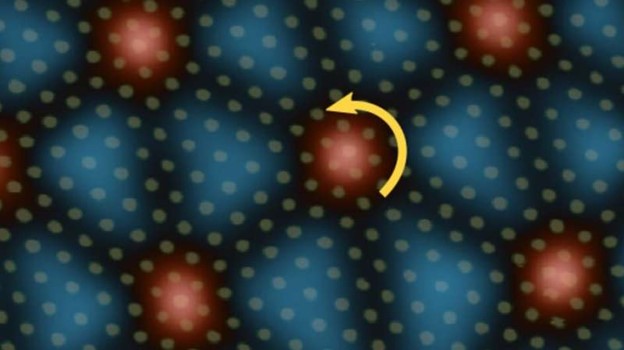 The discovery of superconductivity in two ever-so-slightly twisted layers of graphene made waves a few years ago in the quantum materials community. With just two atom-thin sheets of carbon, researchers had discovered a simple device to study the resistance-free flow of electricity, among other phenomena related to the movement of electrons through a material.
The discovery of superconductivity in two ever-so-slightly twisted layers of graphene made waves a few years ago in the quantum materials community. With just two atom-thin sheets of carbon, researchers had discovered a simple device to study the resistance-free flow of electricity, among other phenomena related to the movement of electrons through a material.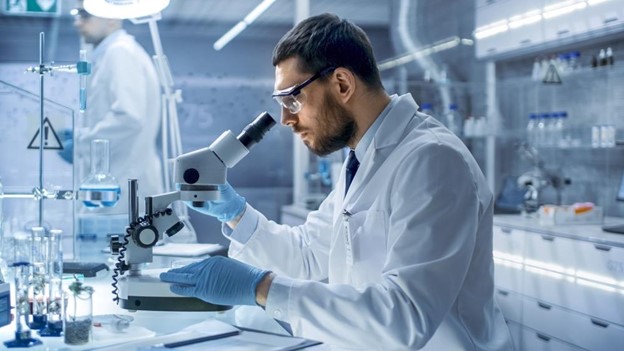 In an article recently published in the Journal of Applied Physics, researchers investigated the influence of strain and pressure on the superconductivity and electron-phonon coupling in magnesium diboride (MgB2). They also discussed the corresponding theoretical approaches and the future of nanostructure design.
In an article recently published in the Journal of Applied Physics, researchers investigated the influence of strain and pressure on the superconductivity and electron-phonon coupling in magnesium diboride (MgB2). They also discussed the corresponding theoretical approaches and the future of nanostructure design. A POSTECH research team led by Professors Gil-Ho Lee and Gil Young Cho (Department of Physics) has developed a platform that can control the properties of solid materials with light and measure them. Recognized for developing a platform to control and measure the properties of materials in various ways with light, the findings from the study were published in the top international academic journal, Nature, on March 16, 2022.
A POSTECH research team led by Professors Gil-Ho Lee and Gil Young Cho (Department of Physics) has developed a platform that can control the properties of solid materials with light and measure them. Recognized for developing a platform to control and measure the properties of materials in various ways with light, the findings from the study were published in the top international academic journal, Nature, on March 16, 2022. The Indian rocket that carried the country's first Geo Imaging Satellite (GISAT-1) failed in its mission, owing to damage in the soft seal in a critical valve which resulted in lower pressure in the rocket's liquid hydrogen (LH2) tank, the Indian Space Research Organization (ISRO) said on Friday. According to ISRO’s Failure Analysis Committee (FAC), the failure happened when the Geosynchronous Satellite Launch Vehicle (GSLV) rocket's cryogenic engine was to take the rocket forward. (The GSLV-F10 is a three-stage/engine rocket. The core of the first stage is fired with solid fuel and the four strap-on motors by liquid fuel. The second is the liquid fuel and the third is the cryogenic engine.)
The Indian rocket that carried the country's first Geo Imaging Satellite (GISAT-1) failed in its mission, owing to damage in the soft seal in a critical valve which resulted in lower pressure in the rocket's liquid hydrogen (LH2) tank, the Indian Space Research Organization (ISRO) said on Friday. According to ISRO’s Failure Analysis Committee (FAC), the failure happened when the Geosynchronous Satellite Launch Vehicle (GSLV) rocket's cryogenic engine was to take the rocket forward. (The GSLV-F10 is a three-stage/engine rocket. The core of the first stage is fired with solid fuel and the four strap-on motors by liquid fuel. The second is the liquid fuel and the third is the cryogenic engine.) For most of us, quantum computing, next-generation quantum sensing and quantum networking still belong to the future. But many early-career scientists and students are already preparing for that future. Physicist Reina Maruyama, who studies neutrinos and dark matter at Yale University, says she has seen a flood of students and postdocs interested in quantum information science. To Maruyama, this buzz is promising news. “When there is an infusion of new people and new ideas, there's likely to be a big advance in technology,” she says. “I’m excited about that, so then I can combine this new technology with really exciting science.”
For most of us, quantum computing, next-generation quantum sensing and quantum networking still belong to the future. But many early-career scientists and students are already preparing for that future. Physicist Reina Maruyama, who studies neutrinos and dark matter at Yale University, says she has seen a flood of students and postdocs interested in quantum information science. To Maruyama, this buzz is promising news. “When there is an infusion of new people and new ideas, there's likely to be a big advance in technology,” she says. “I’m excited about that, so then I can combine this new technology with really exciting science.” Look at all the surrounding stuff. Unless you’re in the middle of the desert or somewhere else far from civilization, nearly everything you see traveled to you by sea.
Look at all the surrounding stuff. Unless you’re in the middle of the desert or somewhere else far from civilization, nearly everything you see traveled to you by sea. 